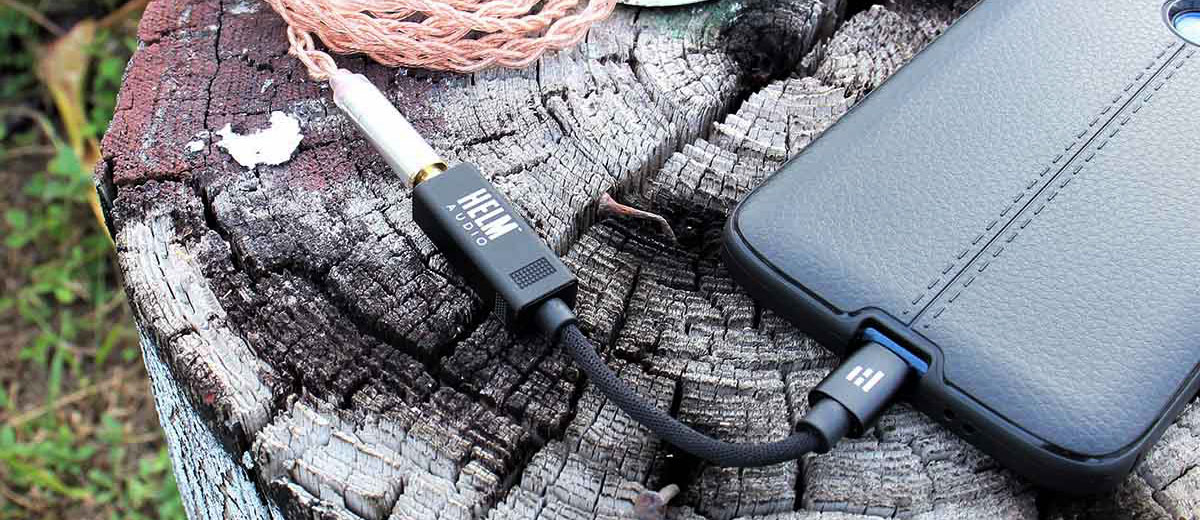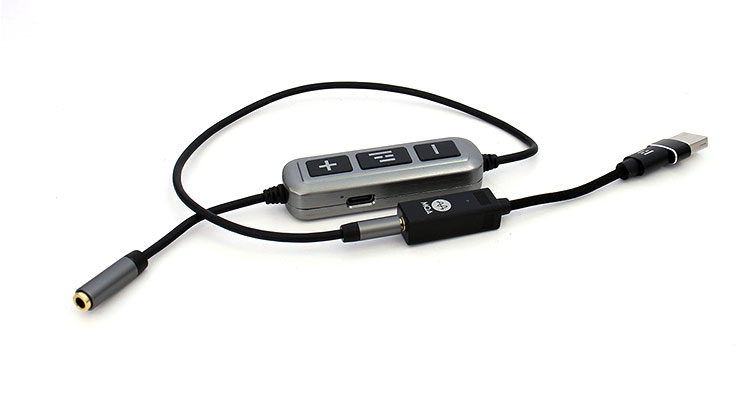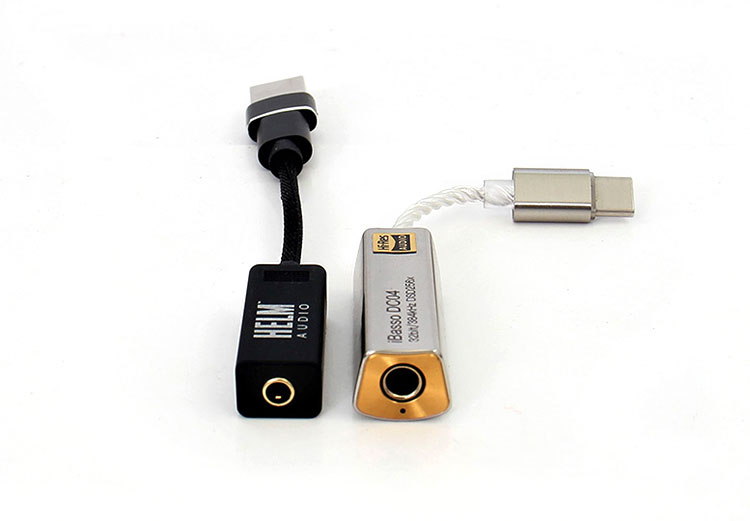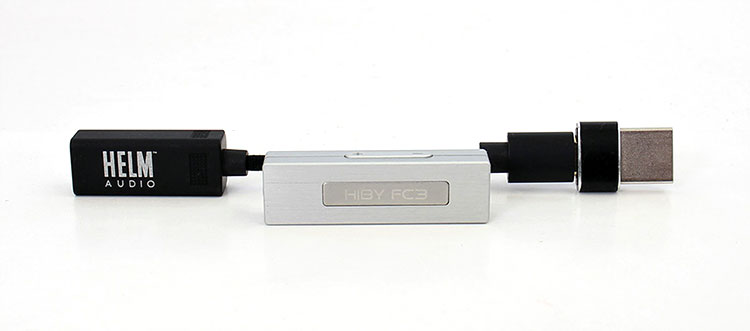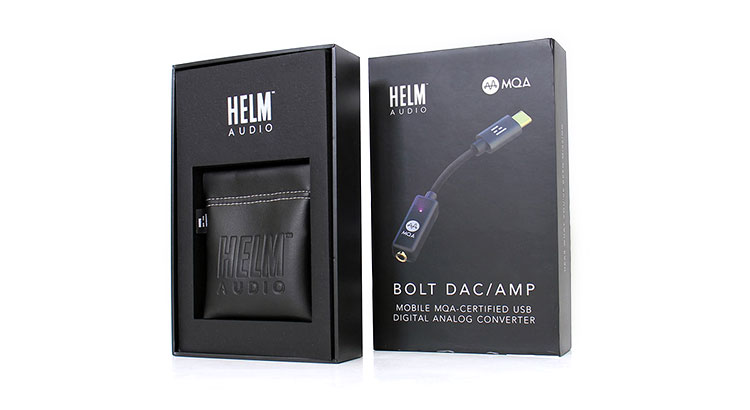Sound Impressions
The sound characteristics should be of no surprise since the Helm Audio Bolt DAC is a THX-certified device. Anyone that has spent time with THX amplification will recognize the tonality.
The main characteristics are a rather linear frequency response with a balanced tonality and crisp character. THX devices tend to have a clean, almost sterile sound with a dark background sound with a high amount of dynamic range.
The bass response is flat, fast, clinical, dry and to the point. Actually below the 22Hz mark bass output is almost nonexistent as if the Bolt DAC had a rumble filter implemented which is good because sub-low frequencies waste lots of power and with low-powered devices that will translate to poor performance due to all that wasted power.
Most THX components have a common sharp midrange tonality to me with lots of clarity that does not hide or veil anything. There is also a nice amount of midrange presence and forwardness with THX components and the Bolt has all these same characteristics.
High-frequency response comes through sharp, crisp and I personally could not hear any noise like hiss or pops in the upper regions coming from this device. The high-frequency extension seems to be excellent and to be honest the main sound characteristic here is cleanliness if described in one word.
Synergy
Efficiency
I bet IEM users will find the amount of available power coming off the Bolt DAC satisfactory. Of course, you could use any headphones you want but I would stick to efficient IEMs unless you use the Bolt in combination with their DB12 AAAMP.
The Bolt DAC alone will power full-sized planar cans like Sundara but will leave some desiring more volume. I would stick to dynamic and very efficient cans of under 50Ω. From my IEM collection, the Bolt DAC powered the sets I tried and all at seriously loud volume levels.
Power
Buyers who will use the Helm Audio Bolt with an Android phone for example heads up and be ready to accept your battery power to be reduced by half or less because that is what I got. My phone lasts 3 days sometimes if I don’t get calls but this device took that down to less than a day.
It’s a small price to pay. But on a positive note, the Bolt itself does not need charging and uses the power off your phone to operate so you just have to charge the phone. A small price to pay again for 3 times the sound quality improvement over any stock phone and that statement is a modest one for most phones.
Pairings
Alone the Helm Audio Bolt DAC might not be powerful enough for full-sized planar cans but used in combination with the DB12 AAAMP I could obtain a very acceptable amount of volume from my Sundara for example. Since Helm Audio is offering the Bolt DAC in a combo deal with the DB12 AAAMP it makes sense to test the combo Right?
All I could say is that the only fact that keeps me from more often recommending this combo for a permanent desktop setup is the fact that the DB12 unit must be charged constantly unless you’re willing to keep it plugged into a 5 bolt source all the time. It should be safe enough to do so.
I was able to power all my headphones with ease, the sound quality beat any sound card I ever heard and the versatility was off the charts. In the palm of my hand, I had a battery-powered headphone amplifier plus a USB DAC amp combo and both could be used separately and in different scenarios. Again, versatility is off the charts with this combo.
Select Comparisons
ibasso DC04
$74.99
Technical
If power output is what you look for then the ibasso DC04 dongle DAC is hard to beat but there is one caveat, it only has a balanced 4.4mm Pentaconn equipped IEM or headphone which most people might not have. I say that only because of the commonality of the 3.5mm TRS.
Power output is rated at 195mW on the DC04 which is about four times the amount of power available off the Bolt DAC. Another specification listed as improved is the distortion level which is rated lower on the DC04. The difference here is the chip configuration.
The balanced output and its specifications were reached by simply using a dual 9281 chip setup design which also made it possible to design this dongle DAC with a dual-mono circuit design.
I would like to add a note and comment about the DC04. Some of our readers reported having issues where their phone was not OTG detecting the DC04. Just go to their webpage and update the firmware which should solve the issue. Remember to use a PC to execute the firmware upgrade procedure and not a phone.
Design
The same design is at play here although the DC04 has a touch more bulk and weight. The DC04 has an angled rectangular metal chassis with a twisted cable assembly, small strain reliefs, and a USB-C connector. Both also include adapters to go full-sized USB.
The color schemes are contrasting because the Helm Audio Bolt has a more subtle matte black finish with contrasting white logos which is visually different from the DC04. Silver and black versions of the DC04 alike, both have a sheen and a more flashy visual design due to all the gold plating.
Performance
If you need raw power there is one obvious choice here and I would not criticize anyone for buying power over clarity because that works best for certain cases. Obvious a dongle DAC is not ideal for hard-to-drive headphones but the Ibasso DC04 does best of all my dongle DACs in this particular category.
There are other neat and interesting points of the Ibasso DC04. Like the App that gives you features like the 64 step volume control. The Helm Audio Bolt DAC has no controlling app.
When you go and look at Codecs, this is when it gets interesting because the DC04 is strictly PCM and DSD and does hardware rendering but the Bolt DAC does mostly hardware rendering and throws in additional MQA capability.
Also notice, one device is THX certified and the other is Hi-Res certified. Which one is best? That is a long conversation for a later date and a good subject matter to discuss indeed.
HiBy FC3
$69.00
Technical
The HiBy FC3 is a micro dongle DAC that power output-wise sits somewhere in between the other dongle DACs. It still remains within and below a line drive 2-volt output and can also be used as a standalone USB DAC for that reason.
The ESS9281PRO powered FC3 Dongle DAC does PCM and DSD but does not handle MQA. Honestly, the codec list is somewhat basic here which does 24-bit 384 kHz and DSD 128 but for most users, I think it will get them by just fine.
The HiBy FC3 is one of the only dongle DACs around that has a chassis built-in volume control. Is it needed? Honestly not really and I think it could actually be a con by doubling up on volume controls and double volume controls could sometimes add noise, hiss, channel imbalance, or other artifacts.
Design
The body was designed with simplicity in mind and made of aluminum with a brushed aluminum finish and is somewhat the more venerable-looking device of the bunch.
One aspect I like about its design is the subtle FC3 RGB LED lighting. This LED is softly illuminated and easy on the eyes while remaining visible, informative with its multi-color gently emitted hue.
Another curious feature is the FC3 small leatherette body cover. None of the dongle DACs I know of come with protective gear except for some that come with carrying pouches like the Helm Audio Bold DAC. Up to now, it remains the smallest electronic gear protective cover I’ve seen.
Performance
There is a slight and barely noticeable difference sound-wise between these two and since they use an almost identical chipset I think it has to do with power output.
It does seem that each one of these dongle DACs has very similar chips and tech involved but sound output depends on how far the manufacturer wants to push the chips to their limits. Let me explain.
For example, the HiBy FC3 is rated to have an output of 70mW which is higher than the Bolt which I feel has around 50mW and to my ears has less power. But the SN ratio on the FC3 was dropped from the chip manufacturer’s spec of 124 down to 112 db while the Bolt chipset is rated at 122 but the Bolt only drops down to 120 db in its listed specifications.
What this means to me is that the cleaner sound will be obtained by the bolt with slightly less power but more power will be obtained from the FC3 with a drop in performance overall when it comes to cleanliness.
Our Verdict
The Helm Audio Bolt DAC is a good example of a device that proves you don’t have to spend a fortune to get clean high-quality full-spectrum audio. The Bolt has become one of my favorite dongle DACs in my collection.
What I like about it most is the cleanliness of the output and the ability to use the most sensitive IEMs with no hiss or noise. The fact that it handles most digital music formats and uses hardware rendering is another plus.
Regardless, if you use it with IEMs or using the output to go into a higher output amplifier you will get very good results. The added versatility of being able to use this device as a standalone USB DAC is another plus.
If you are looking to buy a micro dongle DAC and use IEMs, want to go portable and you want a small and almost inconspicuous device that can improve the sound quality of any phone you could possibly own threefold then the Bolt DAC is a good choice and would be on top of my list of candidates.
Helm Audio Bolt Technical Specifications
- Product Name HELM BOLT USB DAC
- Output Level 1 Vrms at <150 Ohms, 2 Vrms at >150 Ohms
- Compatible Formats PCM, MQA, DSD DoP
- Connectivity USB-C INPUT, 3.5MM OUTPUT
- SNR 120 dB
- THD+N% 0008 at <150 Ohms, 0.0013 at >150 Ohms
- Frequency Response 20Hz-20kHz +/- 0.06 dB
- Dimensions Length 112 mm (4.4”)
- Width 8mm (0.5″)
- Weight 09 grams (0.25 oz)
- Physical USB Type-C Interface
- Connection USB 2.0 High Speed
- PCM Sample Rates : 44.1 kHz, 48 kHz, 88.2 kHz, 96 kHz, 176.4 kHz, 192 kHz, 352.8 kHz, 384

